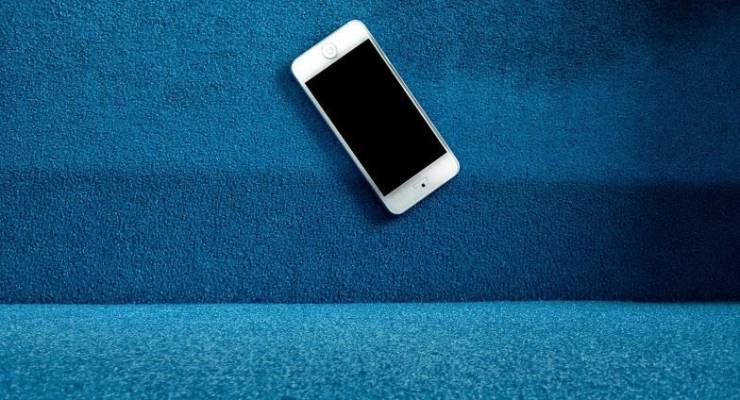
Local telecom carriers have just splurged $835m on auctions for spectrum that will carry 5G mobile technology. That’s a nice little earner for the government’s bottom line although it fell a little short of some expectations of $1 billion.
That’s mainly because regulators were more focused on competitive outcomes rather than pure price maximisation. But the average price paid by the telcos is reportedly one of the highest prices paid for 5G spectrum in the world.
Still, there has been a lot of confusion around about the technology, its uses and benefits and when it will be available.
What is 5G?
5G is the fifth generation of mobile phone technology and follows the standard set by 3G, which made the mobile internet a reality by increasing data speeds, triggering the global explosion in the use of smartphones. This was followed by 4G LTE, now widely available around the world, including in Australian networks.
5G will represent a change in terms of data speeds, latency — the length of time that mobile devices take to connect to each other — and efficiency, which will allow significantly more devices to be connected to a mobile base stations. Connections will also be better at “holding on” to networks in crowded spots and during peak usage times.
5G will initially come as an upgrade to parts of existing 4G networks. Eventually telecom carriers will refit their whole networks to get the full heft of the technology’s benefits but that could take as long as a decade.
How fast will 5G be?
Equipment makers and their telecoms customers have a habit of announcing best condition fully-fitted network speeds. They claim these are as high as 1 gigabyte per second (this would mean a high definition, full length movie could be downloaded in a few seconds).
The reality is always different. In 2018, mobile chipmaker Qualcomm released the results of simulated real world testing based on the first iteration of 5G is that speeds are five to 15 times faster than 4G.
What will it be used for?
Like 3G and 4G networks, 5G will be used for mobile phones and fixed line wireless services where the internet router in the home of office connects to the mobile rather than fixed line (increasingly National Broadband Network) networks.
It has also been optimised for the emerging Internet of Things (IoT), sometimes called the Industrial Internet. This describes a new, mega-connected world where myriad network connected devices include cars, home appliances, medical devices, security equipment, energy and water utility meters, and industrial sensors used in factories, farms, mines and so on.
Is it secure?
There is a tech industry joke: the S in IoT stands for security. There are widespread concerns about security, particularly the exploding number of data streams being used for business purposes and consumer retail services, where private — and apparently secure — links are at risk from cyber theft.
This is why the Australian government has been advised by intelligence agencies to ban Chinese equipment vendors, such as Huawei Technologies and ZTE, from installing their equipment in the country’s 5G networks. It’s a move that follows the same decision by the US, the UK, New Zealand and Japan. China does not allow any foreign vendors into its own 5G networks.
Who are the Australian players?
Telstra, Optus, and a TPG/Vodafone Hutchison joint venture have all purchased spectrum, as well as UK newcomer Dense Air.
Globally, the 3.6 GHz band is being used for 5G. Other telecoms groups already had spectrum purchased in previous auctions of the band when it was used for now-superseded fixed wireless technologies. These include Optus and the NBN, which plans to use 5G spectrum for fixed wireless services in remote and difficult to connect areas.
Telstra in particular has staked its future on 5G. It’s the centrepiece of chief executive Andy Penn’s Telstra2022 plan, which he bet his job on after a June profit warning saw share prices crash.
Optus has been aggressive, at least in public, about its plan. It actually relies more heavily on mobiles for its financial success than its larger rival.
Is it a threat to the NBN?
Some will equivocate and the NBN will say no, but the answer is yes. Industry analysts are unanimous in their view that the vastly increased speeds and ultra low latency — the fall in time for devices to connect will collapse from 60 milliseconds to just one millisecond — will see more households and small to medium businesses opt for mobile-only internet services.
Sure, the NBN will pick incremental revenues for backhaul on the fibre networks that connect mobile base stations, but that is not what the government-owned carrier’s business case is built on. This spells bad news for the NBN’s path to profit and prospects for taxpayer payday for its eventual sale.
So, when is 5G coming?
Again, each time a new improved mobile technology is promoted and then over-promoted by its equipment vendor and network providers, it takes far longer to reach end users.
5G, with its long spectrum lead time, network complexities and multiple uses will take even longer than usual. For starters the auctioned spectrum will not be available until 2020. Initially, 5G will be used for fixed line wireless and the IoT. High end handsets from Android phone makers (Samsung, Huawei, etc) are due in the first half of 2019; Apple’s iPhone plans remain a mystery.
But while Telstra and Optus are building small test networks, it will be probably two years at least until the technology is widely available for consumers.








96% of data is downloaded by fixed line.
5G transmitters requires a network of FIBRE to work.
Consider 5G a fibre network with a little bit of radio at the end.
5G is a marketing term that encompasses several forms of technology tricks involving antennas and radios. Most of these tricks require the receiver to be relatively close to the transmitter and one trick works well in built-up areas where signals bounce from a building exterior surface.
So you can forget 5G serving the majority of Australians anytime soon, because NBN has rolled out so little fibre.
You may well ask why Australian telcos paid the highest prices in the world for the licences, that is clearly because they have a track record of charging Australian consumers the highest prices in the World for their data plans!
Shockingly poor governance that allows commercial concerns to rort the public of such critical infrastructure. 5G further widens the digital divide.
96% of data is downloaded by fixed line.
5G transmitters requires a network of FIBRE to work.
Consider 5G a fibre network with a little bit of radio at the end.
5G is a marketing term that encompasses several forms of technology tricks involving antennas and radios. Most of these tricks require the receiver to be relatively close to the transmitter and one trick works well in built-up areas where signals bounce from a building exterior surface.
So you can forget 5G serving the majority of Australians anytime soon, because NBN has rolled out so little fibre.
You may well ask why Australian telcos paid the highest prices in the world for the licences, that is clearly because they have a track record of charging Australian consumers the highest prices in the World for their data plans!
Shockingly poor governance that allows commercial concerns to rort the public of such critical infrastructure. 5G further widens the digital divide.
So, yes, speed and efficiency will dramatically improve with 5G. Latency not so much as it is affected by both the amount of users and data at any particular moment. Mobile use from cars and business will explode with the speed and applications that 5G makes possible. Just think of all the data necessary for autonomous cars, busses and trucks, mobile offices and factories and god knows what else will invented on the back of high speed mobile data.
While latency will always be a problem with wireless systems, it isn’t with NBN’s optic fibre. It’s capacity is theoretically limitless and it operates at the speed of light. Future technologies on the horizon such as quantum computing and holo-tv will use every bit of optic fibre capacity we can make available and is more or less future proof.
I suspect that 5G, while making many new mobile endeavours possible, will be out of date within a couple of decades and will be replaced by 6G or something similar.
On another note, just as the international community looks askance at Huawei, so they will eschew anything developed and/or manufactured in Australia if the govt proceeds with its crazy scheme to enforce ‘back doors’ into all new data products.
I feel the ‘threat’ to the NBN is as always overstated. while the speeds may be slightly comparable under ideal conditions, it fails to take into account the cost of data. i pay around $100 a month for 1,000 GB on a landline while on my mobile device the overrun charges run at about $10 a GB
Just a tip, Hyperstimulated, you need to renegotiate your plan. I pay $65/month in a regional area for unlimited 50mbps with no lock-in. I actually meter between 43-48mbps, so I’m satisfied.
Exactly hyper. The price points of mobile versus landline mean that mobile will be necessary but never overtake landline, especially if the NBN is properly rolled out.
The IoT is the biggest crock of white ever. Some people want an internet connected washing machine or fridge, but mostly it will be businesses using it in an unsecured way for not much good reason.
The NBN shouldn’t be quaking in their boots.
The regulators shouldn’t focus on “competitive outcomes” because they have no idea how that affects the price. If we gave it to the telcos for free they would still charge customers as much as they can.
The 4G spectrum got over $3 billion because that is what the telcos thought it was worth. ACMA has dudded the Australian taxpayer again – they should not be allowed to run any spectrum sale processes.